The FinOps eco-system is getting crowded these days and Cloudability is one of the well-known and established names in the marketplace. The eco-system is changing however, a lot of FinOps experts tell us that it’s important to have a range of tooling to help you unlock the insights and optimizations to maximize the efficiency of your cloud usage.
At Turbo360, we have a number of customers who are already historical Cloudability users but feel they aren’t achieving their desired outcomes. If you are reading this blog, you are probably in a similar position and considering alternatives to help you address your cost management challenges.
When do you need an alternative solution for Cloudability?
When you are a multi-cloud user, and most of your workloads are provisioned in Azure, you may need an advanced features like better cost allocation mechanism to give insights on cost per customer, cost per team and more to help you save cost.
Also, if you want to develop a cost-conscious culture among the engineering teams and make it easier for them to see cost optimization insights and take action, then Turbo360 could help you with it.
In this blog, we will explore the top five alternatives to Cloudability and provide information about each platform and its purposes to help you choose the best one for your business use case.
Top 6 Azure Service Bus Explorer Alternatives
1. Turbo360
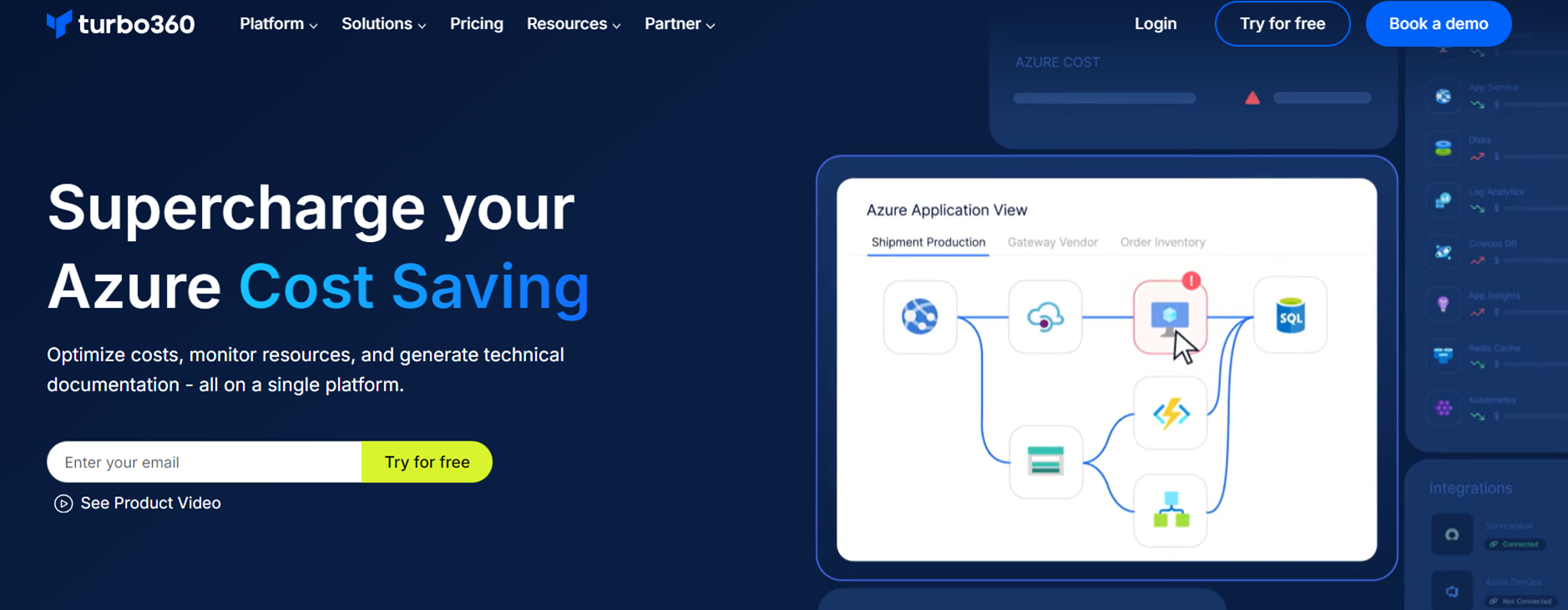
Turbo360’s Azure Cost Analyzer offers a streamlined solution for managing Azure cloud costs. It brings together tools to help you monitor, optimize, and clearly see your Azure spending in one place.
Key Features
- Cost Visibility: Turbo360’s Cost Analyzer overviews your Azure expenses, breaking down costs into appropriate scopes for your team to manage. Democratizing cost date is the best way to change to a cost aware culture.
- Cost Analysis: Dive deep into your Azure costs, analyzing them by various dimensions such as tags, and periods. This detailed view helps you identify what’s driving costs and uncover areas for savings.
- Budgeting and Alerts: Stay on top of your spending by setting budgets in the tool. You’ll get alerts when approaching or exceeding those limits so you can manage your budget proactively.
- Forecasting: Use historical data to predict future Azure expenses. This feature is excellent for long-term financial planning and setting future budgets.
- Optimization Schedules: Save costs by automating resource scaling based on business hours. For example, reduce resources during off-peak times and save as much as 70%.
- Rightsizing: Identify overprovisioned resources and scale them down to an appropriate size to minimize waste and overspend
- Idle Resources: Identify unused resources that are in your environment, yet you are still paying for them.
- Recommendations: Turbo360 also suggests cost-saving measures tailored to your Azure usage, such as reservations on Virtual Machines and App Service plans, which can save you up to 72% compared to pay-as-you-go options.
2. CloudZero
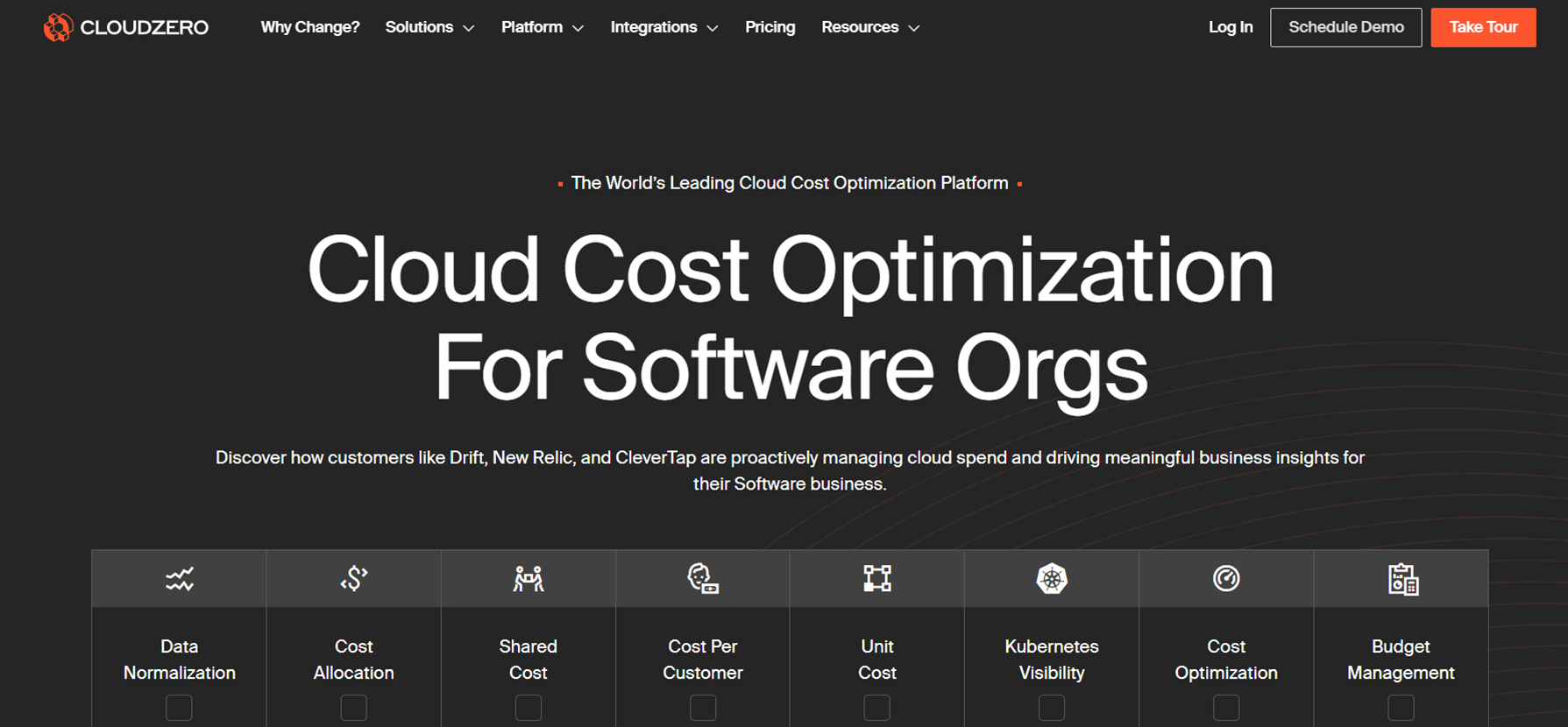
Conventional cloud cost management tools typically provide a broad overview of your cloud expenses. CloudZero takes a diverse approach with taken-a-toll insights, particularly outlined for software-driven organizations. They help engineers by linking technical choices directly to business performance.
For those aiming to gain insight into their Cost of Goods Sold (COGS), we offer a comprehensive view of expenses across your business, covering platforms like AWS and Snowflake.
3. CloudHealth
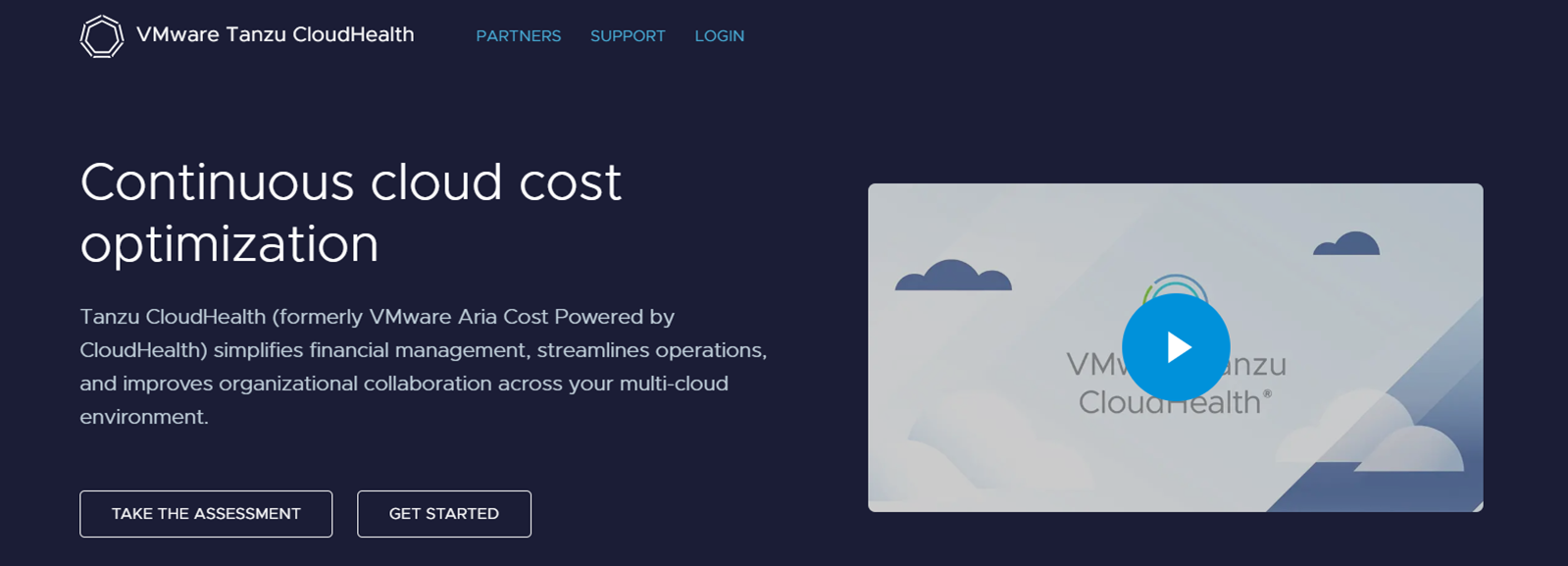
CloudHealth is a solid choice for businesses with significant cloud expenses. It offers a more conventional approach to cloud cost management and works well for companies looking to improve cost visibility, especially in hybrid or multi-cloud setups.
Since VMware owns it, CloudHealth also focuses on enhancing cloud security, compliance, operations, and reporting. It provides essential cloud financial management features like rightsizing and purchasing AWS reservations, making it a well-rounded option for managing cloud costs.
4. Harness

With Cloud Fetched Administration (CCM) from Tackle, IT and fund groups can work towards making strides in their cloud-fetched visibility. Depending on asset assignment and changes in commerce methodology, FinOps groups can utilize CCM to prioritize program advancement ventures.
Users, moreover, laud Harness’s capacity to provide more nitty-gritty information visualizations with other cloud suppliers, such as Microsoft’s Purplish Blue Cloud and Google Cloud. Teams can also make and implement taken-a-toll arrangements to remain in control of cloud spending. Those who complain about the tool’s estimating show say it can be expensive, depending on the cloud foundation configuration.
5. Flexera Optima
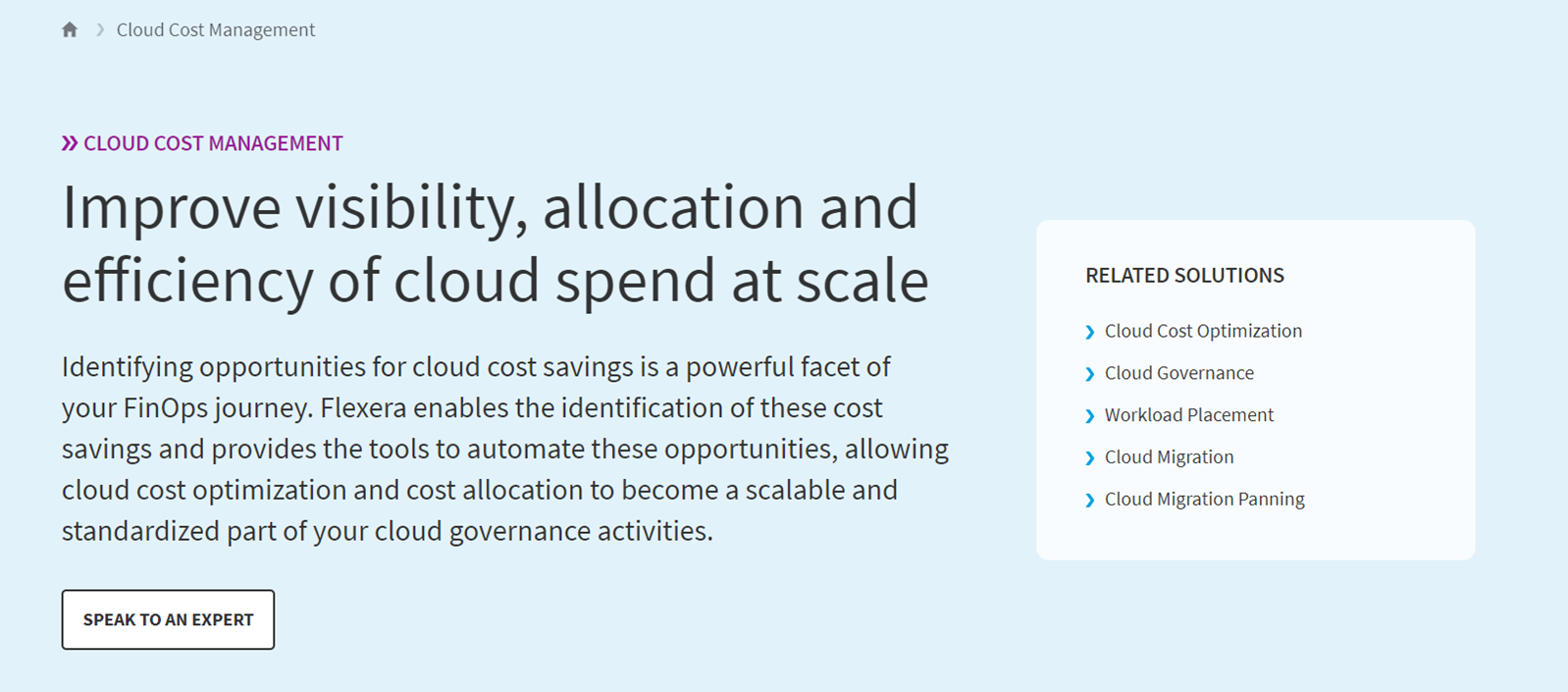
Flexera focuses on enhancing the effectiveness of multi-cloud governance teams. It offers automated budget controls and actions to help cut waste and avoid unexpected expenses.
Teams can analyze and report cloud infrastructure costs by account, provider, and region. Although the tool takes a more traditional approach to cloud cost management, it combines billing data with optimization recommendations and uses tags to track and report specific details.
6. Cloudcheker
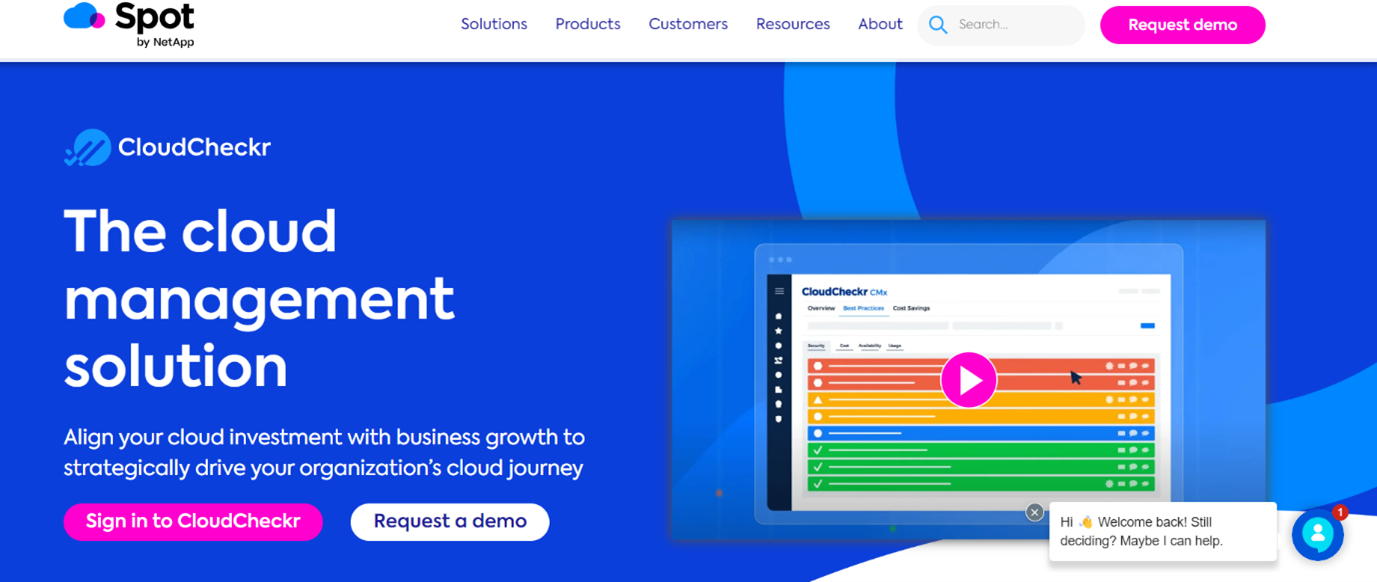
CloudCheckr is an excellent option if you’re looking for a cloud cost management tool that handles cloud security and compliance. It’s especially useful for optimizing resource use across single—and multi-cloud environments.
The platform aids cost governance teams by analyzing Reserved Instances (RIs) and Savings Plans, helping to maximize volume discounts, reduce waste, and prevent cost overruns through rightsizing and timely alerts.
Conclusion
In conclusion, while Cloudability is a solid choice for AWS-centric environments with a significant cloud spend and dedicated cost management teams, it’s not always the best fit for every organization. Understanding your technology landscape and cost management goals will help you choose the best-fit tools for your FinOps initiative.
For businesses heavily invested in Azure, Turbo360 offers a robust alternative with tailored cost optimization tools, while CloudZero provides unique insights for software-driven organizations. CloudHealth, Harness, Flexera Optima, and CloudCheckr each bring their strengths to the table, addressing different aspects of cloud cost management and governance.


